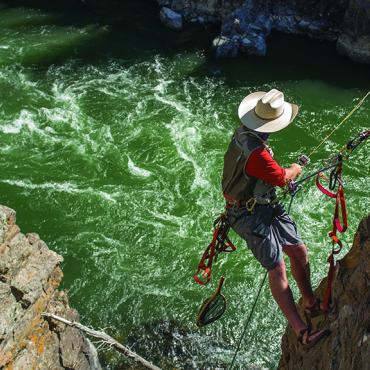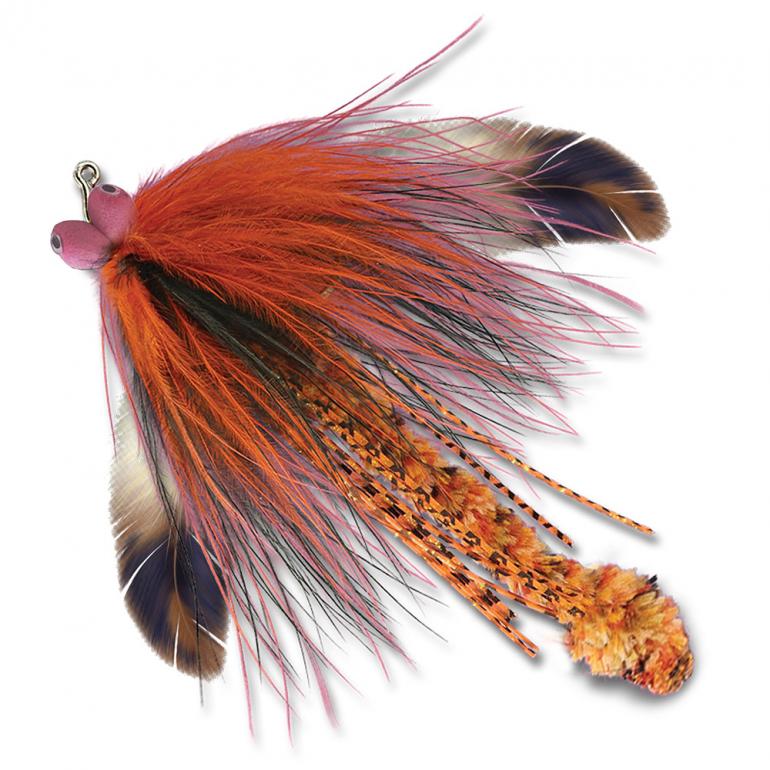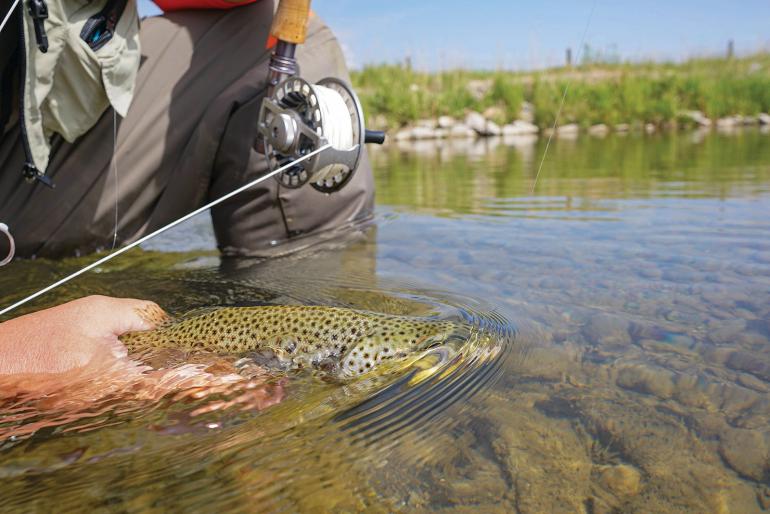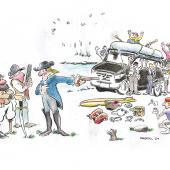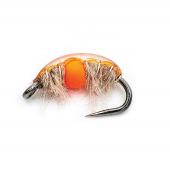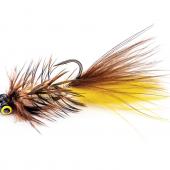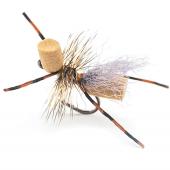Feeling Stimulated
Tying the Shagger, an attractive wet-fly pattern.
So... you’re in a bit of a dry spell, and need a slumpbuster, eh? Maybe you’re having trouble with the damsels—nymphs, that is—or striking out on the river, time and again. We’ve all been there. I certainly was.
That is, until I designed this phallic fly. I named it the Shagger, and it’s sort of a sunken stimulator-nymph combo. That’s right, call it a two-on-one or a hole-in-one, whichever you prefer. The best part about this fly is that you can fish it any way you like: swinger style, or maybe retrieve it with a little strip-tease and a double-haul. My only recommendation is to avoid fishing it dry; it’s best when wet. After a great performance out there in the riverbed, you’re sure to make lots of friends who want to know your tricks. Some might even want to be around when you tie your next knot.
Materials
Hook: Ti84 Magnum, #2-6
Thread: 4/20 Haze, purple
Body: Pink squirmy worm
Wing: Bald-eagle feathers
Dubbing: Grizzly neck fur
Eyes: The biggest set you can find
Instructions
1. After placing the hook in your gyroclamp, start the thread behind the bolt knob of the hook and create a small thread base around the shaft of the hook body. It helps to leave a bit of space for the aquafluff.
2. Take a potent strain, er… strand, of the purple-haze thread, and create a large bulge around the widgetarm of the hook. Don’t be afraid to pack on the girth.
3. Tie down a 4- to 8-inch section of squirmy worm just behind the curl. Wrap lightly, so as not to burst the rubber with the bulbous head you just created.
4. Using your ningding calipers, apply a reverse-hairpin blending of grizzly neck fur. It’s softest and fishes best when taken off a hibernating bear between March and April. Make sure to be thorough here, to avoid any unnecessary frillbacking. Applying a drop of lumiglide can help.
5. After foraging or harvesting some bald-eagle feathers, take the base of a quill and split it nanovain-style in the shape of a flying-V. Use a spectralevel trimmer to ensure you have the right form.
4. Tie down the feather by wrapping the thread six to nine times, using a rivetcrank to keep everything secure, and allow the magnetolock to engage on the hook bevel.
3. Making sure not to cross the stranding directionals, slowly meet the thread with the hackles in a gentle and sensual fashion. This will guarantee proper dexterity of the hammerschlagen. To make sure the form is sufficient, give the fly a few taps with your pneumatic air wrench. If it registers under three, you’re set.
2. For this particular fly, we avoid a soft spackle finish. Instead, pass the thread through a thermospaner to congeal the spectral weave.
1. Complete the fly with a triple-axel grand finale. Cut the remaining noodledoodle filament and leave a lead solder on the tip of the head.
Joe King is the product-line manager at Wet & Wild Adventures. To learn more about this fly, or to book a wet-wading session with Joe, call him at 406-582-8068.


